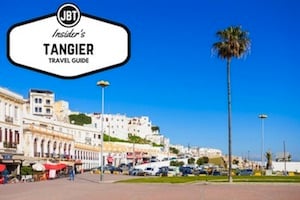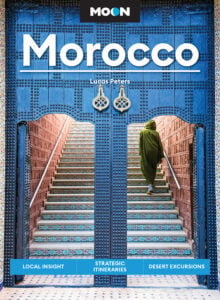![]()
Morocco for the past several years has been trying to stop the deforestation of their lands by creating a number of bio reserves and national parks in the Ait Bougmez Valley, Rif Mountains, and High Atlas Mountains. Wildlife in Morocco has dwindled because of agricultural use of the land, pollution entering the water sources and locals annihilating various species. The government has taken this turmoil into account, and there are still many areas of Morocco which luckily still untouched. There are eighteen species of mammals that are on the border of extinction along with eleven bird species here in Morocco. For anyone who is visiting Morocco the best places to witness the wonders of wildlife are the national parks and reserves.

Houbara in Morocco
Purple Heron, White Headed Duck, Crested Coot, Houbara and Marble Duck have lost numbers due to issues in the marshland. Exactly 182 plant species are now endangered, but for tourists with conservation in mind, protection of these species is possible.

Spotted Woodpecker in Morocco
In a direct way, going on a trip with Journey Beyond Travel helps ensure the continued protection of reserves like the Souss Massa Biological Reserve or the Toubkal Biological Reserve. These two large parks make it possilble to see more than 200 species of animals and birds, some that may not be around forever. Waders, Spoonbills, Flamingos, and Woodpeckers are going to be found within the forests of these parks.
Egyptian Cobras, red Foxes, Leopards, and Golden Jackals are also within the borders of the reserves. Other smaller species of animals like squirrels and butterflies can be seen in the High Atlas Mountains when on a trekking Morocco tour.

A Chillaxed Barbary Monkey in Morocco
Trekking the desert of Morocco also yields other species of wildlife such as Wild Boars and Eagles. High Atlas trekking up the mountains of M’Goun or Jbel Toubkal can help visitors reach other wildlife not always seen. For example, Barbary Monkeys are quite endangered but they can be seen when trekking up the valley paths towards the mountains.
By trekking in Morocco you are also able to experience the culture of Morocco. Morocco villages are largely without electricity in the High Atlas Mountains. They rely heavily on streams, rivers, lakes, and waterfalls for their water. They also build huts from wood and sand, such as adobe homes in the cliffsides to live. Their homes show elaborate art on the walls and ceilings. Morocco tour operators can arrange home stays with many of the families living in such homes. These humble experiences help us all appreciate all that we have and hold dear.
Dab Lizards in Morocco
Most of the trekking can be done with mules bringing the equipment along. However, there are some paths in which the mules have to be left behind as they narrow. Throughout the footpaths of Morocco, it’s possible to see goats, dab lizards and even the elusive panther (a legend these days).
by Sam Mitchell








